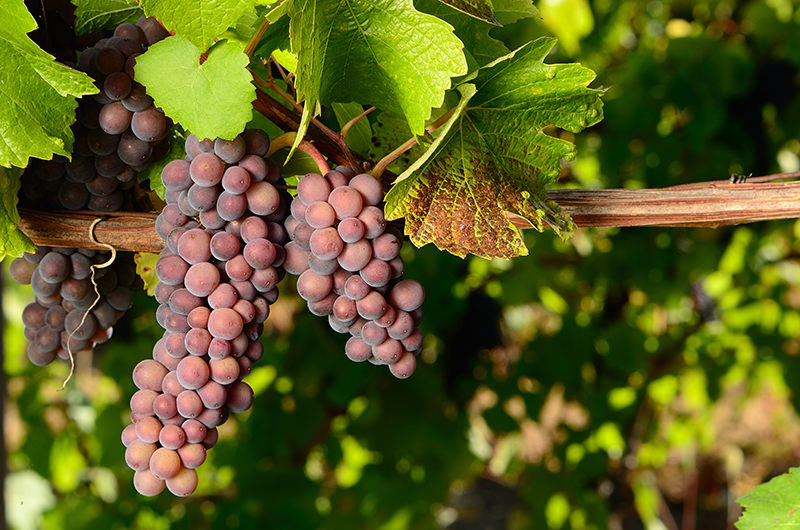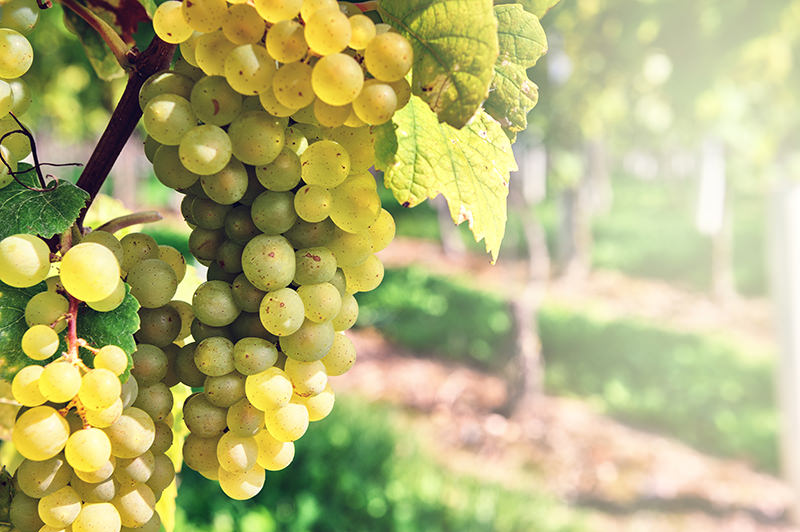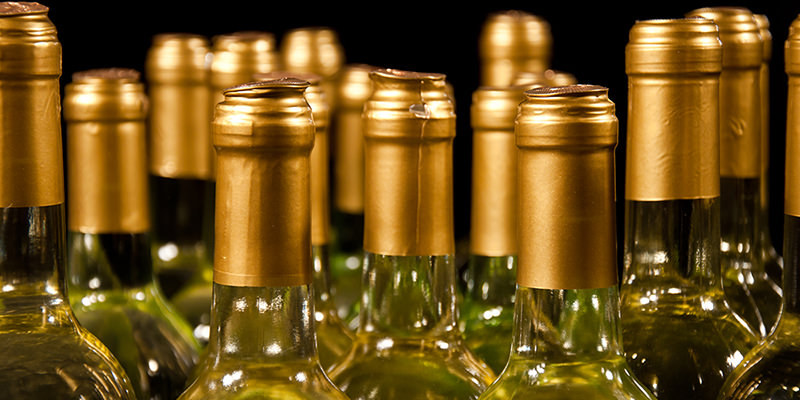White wine is white wine, right? Maybe to “Cab-4-Life” haters. But as anyone who actually drinks a variety of white wines knows, there’s a literal globe of expressions out there.
In fact, it would be a lot easier to catalogue our experiences (and have some verbal ammo for the white wine haters) if only the names of at least three fairly prominent whites weren’t super similar. We’re talking Pinot Grigio, Pinot Gris, and Pinot Blanc.
Chances are, you’re more thoroughly acquainted with the first, though chances are, like most of us, you also know it in its more two-dimensional, citrusy-pop expression. Good for passing a summer day, but not nearly the end of the Grigio story. Pinot Gris is not as commonly known, likely due to slightly higher pricing (we’ll explain below), and Pinot Blanc is probably the least known of all. But there are actually some serious, as in genetic, bonds between all three grapes. And also some pretty interesting differences which, once understood, will make you wiser about all things wine. And a lot better at buying it, which is pretty much the goal, right?
On to the breakdown:
They’re all related.
They may pour out of the bottle differently, but Pinot Grigio, Pinot Gris, and Pinot Blanc are all from the same family. The “Pinot” family, no surprise, which puts them in close relation to Pinot Noir. Meaning you drink Pinot, you fancy.
They’re all mutants.
We have genetic mutation to thank for the variety within the animal and plant kingdoms, the terrifying marvels of the X-Men saga, and the abundance of delicious wine in the world. Pinots Blanc, Gris, and Grigio are all color mutations from Pinot Noir.
Pinot Grigio/Gris are the middle mutations.
Pinot Noir contains the largest amount of active anthocyanins (one component that contributes to the color of a grape). Pinot Blanc is a mutation of Pinot Noir with the least amount of anthocyanin (it’s inactive). Pinot Grigio/Gris are the middle mutations, kind of half way between Pinot Noir and Pinot Blanc.
Speaking of, Pinot Grigio and Pinot Gris are exactly the same, but different.

Pinot Gris/Grigio is the name of a grayish/purple-hued grape that originated in the Alsace region of France (see above). “Grigio” is simply the Italian translation of “gris.” But that doesn’t mean a bottle of either will taste the same. While the grapes are genetically identical, the winemaking—thus the wines—can differ.
Thus, Pinot Grigio vs. Gris can teach you about winemaking.
If you consider how vastly different in expression and cost bottles of Pinot Grigio and Pinot Gris can be (not to mention different bottles of Pinot Grigio), all from the same grape, you’ll see how important terroir and the role of the winemaker are in influencing a wine’s character. Ever knock back half a bottle of $10 spritzy, bright, lemony Pinot Gris on a hot summer day? Neither have we.
That said, Pinot Grigio is often misunderstood.
Like your angry teen, Pinot Grigio is often ultra “fresh” and zippy, and that’s because one of the bigger differences between Pinot Grigio and Pinot Gris is production: Pinot Gris tends to be crafted toward a slightly rounder, barrel-aged, food-friendly flavor profile. Because of its early and immense popularity in the U.S., Pinot Grigio began to be more mass produced, with sometimes two-dimensional, albeit delicately fruity and zippy, white wines dominating the market. But that doesn’t mean complex, structured, even oak-aged Pinot Grigios aren’t produced. (‘Cause, well, the more wine the better.”)
We associate Pinot Grigio with “zippiness,” but it’s a low-acid grape.
A lot of the cheaper Pinot Grigio we all drink is mass-produced and/or steel-tank-aged, with the actually lower amount of natural acidity in the grape preserved as much as possible. This is where you get the sometimes uninteresting but ridiculously refreshing, zingy, citrusy, who says I can’t drink with a straw type of Pinot Grigio. Higher-end Pinot Grigio and Pinot Gris tends to go through barrel aging, which mitigates the lemony zing and acidity, enriches fruit (even with a bit of wood spice) and gives it more structure generally. Which is why you pay more for these wines; if a wine requires aging, that adds to the cost.
Pinot Gris is a traveling grape.
Grape varieties can have specific regional birthplaces, but often they’ll find themselves on new terrain. This is how Pinot Gris became Pinot Grigio. It started in Burgundy, stopped for a while in 14th-century Switzerland to be the emperor’s favorite, and found its way to Italy, where the still- continuing legacy of Pinot Grigio was born. But Pinot Gris also found homes in Germany, Austria, South Africa, and Oregon. That’s a lot of airline miles.
Pinot Grigio/Gris is a sensitive grape.
We don’t mean it’ll start tearing up at “The Notebook.” But part of the reason you can get such variety out of Pinot Grigio/Gris is because it reacts to terroir sensitively; generally preferred are cool climates and hillsides, hence its happiness in both Alsace and northeastern Italy. Variations, whether in temperature or aging style, will impact the way the grape shows acidity, fruit character, and aromatics. In that sense it really is a winemaker’s grape.
Pinot Blanc has its own thing going on.

However they’re aged, Pinot Gris/Grigio will tend to showcase a bit more acidity and structure than Pinot Blanc. Pinot Blanc has a rounder expression (when done well; done poorly, it’s a bit of a flabby anti-climax). It’s actually among the regular, daily whites consumed in Alsace. Unlike the often brighter fruit flavors you’ll find in (some) Pinot Grigios, Pinot Blanc can tend towards apple pit and even smoky flavors; it can also be oaked for a bit more richness.
Pinot Blanc also has an Italian counterpart.
No surprise here, it’s called Pinot Bianco and can actually be blended with Chardonnay, among other grapes, to pretty great effect. In fact, part of what makes Pinot Blanc important is its versatility: it’s used in still wines, sweet, and sparkling (including, though typically in smaller proportion, Champagne). In northwestern Italy, Pinot Bianco is also used in Franciacorta, which, unlike Prosecco, is an Italian sparkling made in the Méthode Champenoise. It’s also a major component in Crémant d’Alsace. So Pinot Blanc may have less zip, but it’s got some game.
Speaking of versatility, Pinot Gris can be drunk as a dessert wine.
Pinot Grigio is typically sucked back young and crispy, but Pinot Gris can actually be picked late-harvest and turned into a rich dessert wine.

